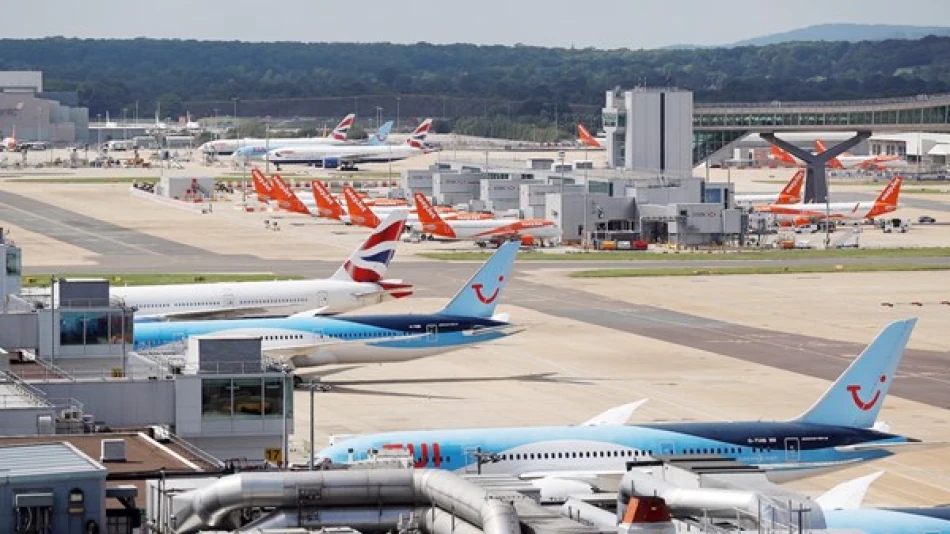
Technical Issue Grounds Flights Across the UK, Causing Disruptions
UK Aviation Crisis: Technical Failure at Swanwick Control Center Triggers Nationwide Flight Disruptions
A critical technical malfunction at Britain's primary air traffic control center has forced authorities to impose severe flight restrictions across the UK, leaving thousands of passengers stranded and highlighting the fragile infrastructure underpinning one of the world's busiest aviation hubs. The incident at Swanwick, near London, represents one of the most significant operational disruptions to hit British aviation in recent years.
The Scale of the Crisis
The UK's National Air Traffic Services (NATS) confirmed Wednesday that a "technical issue" at its Swanwick control center—the nerve center managing much of Britain's airspace—has forced them to dramatically reduce flight operations as a safety precaution. The facility, which handles approximately 2.5 million flights annually, serves as the primary coordination hub for aircraft movements across England and Wales.
Gatwick Airport authorities have confirmed the disruption is affecting departures nationwide, with the ripple effects extending far beyond London's aviation network. While NATS engineers are working to resolve the problem "as quickly as possible," the agency has provided no timeline for restoration of normal operations.
Economic and Operational Impact
Immediate Consequences for Airlines
The timing couldn't be worse for British aviation. August represents peak travel season, with millions of passengers traveling for summer holidays. Major carriers like British Airways, EasyJet, and Virgin Atlantic face mounting costs from delayed flights, passenger compensation claims, and operational disruptions that could extend well beyond the immediate technical fix.
Historical precedent suggests the financial impact could be substantial. Similar air traffic control failures in other major aviation markets have resulted in hundreds of millions in losses when accounting for cancelled flights, passenger rebooking, and knock-on effects throughout the European flight network.
Broader Infrastructure Concerns
This incident exposes critical vulnerabilities in the UK's aviation infrastructure at a time when the sector is still recovering from pandemic-era disruptions. Unlike distributed systems used in countries like the United States, where multiple regional centers provide redundancy, the UK's heavy reliance on Swanwick creates a single point of failure that can paralyze the entire system.
International Context and Comparisons
The UK joins a growing list of major aviation markets that have experienced significant technical disruptions in recent years. The Federal Aviation Administration in the United States faced a similar crisis in January 2023 when its NOTAM system failed, grounding all domestic flights for hours. Germany's air traffic control system has also experienced notable outages, though typically with more limited geographic impact due to better distributed infrastructure.
What sets the UK situation apart is the concentration of European connecting traffic through British airports. Heathrow alone handles over 80 million passengers annually, making any extended disruption a continental concern rather than merely a domestic issue.
Looking Forward: Systemic Reforms Needed
This crisis will likely accelerate calls for infrastructure modernization and redundancy improvements within Britain's air traffic management system. The incident demonstrates how 21st-century aviation volumes remain vulnerable to single points of technical failure—a risk that becomes more pronounced as air travel continues recovering to pre-pandemic levels.
For passengers, this serves as a stark reminder of the interconnected nature of modern aviation. A technical glitch at one facility can cascade into travel chaos affecting millions, underscoring the importance of comprehensive travel insurance and flexible booking policies during peak travel periods.
The resolution timeline will determine whether this becomes a footnote in summer travel disruptions or a catalyst for fundamental changes in how Britain manages its increasingly crowded skies.
 Layla Al Mansoori
Layla Al Mansoori







